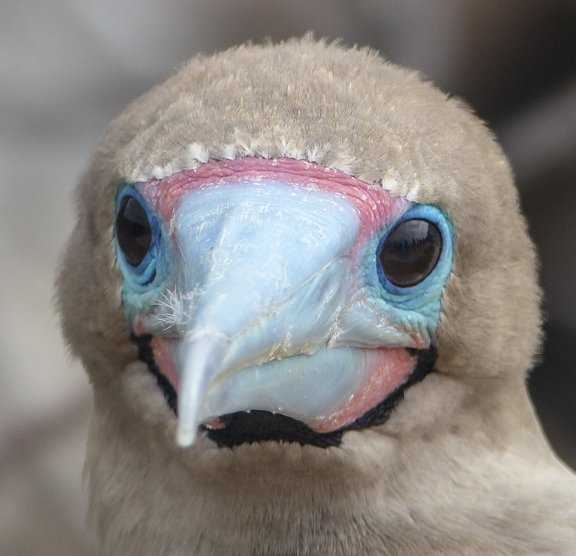There is nothing quite so delightful as getting out of the ship in the early hours when all is quiet and calm…and kayaking along the base of the inside cliff walls of Darwin Bay. The ship arrived inside just before daybreak, and the mariners had the kayaks down in a jiffy. By the time we got out, this island of birds was already wide awake and raucous.
This small northeastern island hosts one of the world’s largest colonies of red-footed boobies. Along with them, come the great frigate birds, swallow-tailed gulls and Nazca boobies – all fabulous in their own right. Throughout the day whenever we looked up into the sky, the frigates were soaring, ever alert, ever searching for opportunities to feed, either by snatching up from the sea surface with their long bills hooked on the end, or by practicing “kleptoparasitism” – stealing from others so that they themselves may survive.
So the morning was spent wandering the trail slowly – so much, perhaps too much to absorb by eye and ear! Camera memory cards filled fast, and real memories were also made…images that came with smells and sounds and the feel of wind in our faces. The sky overhead was filled with silhouettes; hovering angular wings and long tail feathers belonging to the frigates, and others zipping along with errands to run, belonging to the red-footed and Nazca boobies. Swallow-tailed gulls fanned their tails and screeched when frigates came too close to their chicks. Loads of juveniles were present today: dark chocolate-brown juvenile red-footed boobies and larger, white-chested mottled brown juveniles of Nazca boobies wandered the beach. It was thrilling to see several of these youngsters flapping so hard they had lift-off for the first time in their lives…even if it was only a few inches off the ground!
One last snorkel was also in the books – and snorkel we did! Visibility perhaps not the best, but enormous parrotfish, hogfish and beautiful Moorish Idols graced the steep walls that continued into the depths of the crater called Darwin’s Bay.
In the afternoon we visited the opposite side of the bay, a site known as “Prince Philip’s Steps” (the real Prince Philip did indeed visit here in the 1960’s). A practically vertical climb up 90 feet takes the visitor to the flat top of the island, covered in slabs of tilted, old, rippled lava; cracked by huge circumferential fissures that ring both the bay and the outer coastline of Genovesa.
The wind blows freely over a thin layer of lava where we arrived on the outer coastline. Underneath lie tunnels and spaces used by the Galapagos storm petrels during the day to raise their chicks. Nocturnal feeders, they leave the island at night, and range far and wide to feed on the small planktonic organisms that come to the surface in the dark, hoping to escape just such predation. Mother Nature is nothing if not inventive; everyone is trying to keep one step ahead of defeat.
An owl! We did it! In between photographing and gazing at the intricate aerial maneuverings of frigates and boobies, we found a short-eared owl! Major predator of storm petrels! With that accomplishment under our belts, we returned on board to celebrate our last evening together in this most remarkable place on earth.







